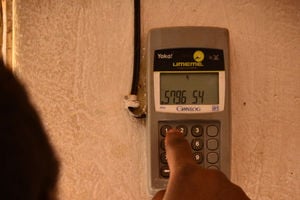
Ever wonder why your power bill remains high despite your best efforts to save energy? It is a frustrating situation, especially when you are diligent about turning off lights, taking shorter showers, and taking advantage of off-peak hour to do your ironing. If your bill still seems unusually high, the culprit might be phantom energy. Phantom energy is like a hidden drain on your wallet. So, how can you tackle this sneaky energy thief?
What is phantom energy?
Before we dive into solutions, let us understand phantom energy. Robert Ongom, an electrician, defines it as the electricity used by devices and appliances even when they are off or in standby mode.
For instance, your TV, microwave, and phone charger consume power just by being plugged in.
Devices such as TVs, gaming consoles, and computers often stay in standby mode to turn on quickly when needed. Although each device’s energy use might seem small, it can add up to 10 percent of your home’s total electricity consumption.
Why is it a problem?
You might ask, “If it is just a small amount of power, does it really matter?” Yes, it does. Phantom energy is a constant drain on resources, silently increasing your electricity bill and straining power grids.
It represents wasted energy, power used without any real benefit, leading to higher costs and more carbon emissions. As Ongom notes, in our effort to be more energy-conscious and environmentally friendly, cutting down on phantom energy is a crucial step.
Monitoring
To tackle phantom energy, start by identifying its sources. Using an energy monitor is an effective way to do this. These devices plug into an outlet and show real-time electricity use of individual appliances, even when they are off. For a broader view, advanced energy monitors can be installed on your home’s electrical panel to track overall energy consumption.
Smart plugs and outlets
Smart plugs and outlets are excellent tools for managing and reducing phantom energy. These devices can be programmed to cut off power at designated times or controlled remotely through a smartphone app. By incorporating smart plugs, you can ensure that high-energy devices, such as your entertainment center, are not silently consuming electricity when not in use.
Unplug devices
The most straightforward way to eliminate phantom energy is to unplug devices when you are not using them. This is particularly important for items that are not frequently used, such as toasters, coffee makers or lamps.
Although it may seem inconvenient at first, it becomes a natural habit over time, and the savings are well worth the effort.
Use power strips
If unplugging each device individually feels cumbersome, power strips can be a lifesaver.
By plugging multiple devices into a single power strip, you can easily cut off power to all of them with one switch. Advanced power strips are even available that automatically shut off power to devices when they are not in use.
Energy-efficient devices
When it is time to replace old electronics or appliances, choose energy-efficient models.
Look for devices designed to minimise energy consumption both during operation and in standby mode.
Upgrading to these energy-efficient models can significantly reduce your overall energy usage and lessen the impact of phantom energy.








